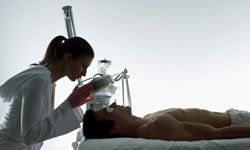Acne can make an unwelcome appearance on our faces at any point between the cradle and the grave. While it's more common and more intense for adolescents and those in their 20s due to heightened levels of hormones such as testosterone, infants and older adults get acne as well. Often, we'll think we've outgrown it only to be surprised by its periodic reappearance.
Our faces are covered in tiny hair follicles. Sweat travels out of these follicles, as does an oily substance called sebum. Sebum is created by sebaceous glands, which exist within each hair follicle. As sebum works its way up and out of the follicle, it carries with it dead skin cells. The mix of sweat and sebum forms a protective layer upon your skin, keeping bacteria and other harmful substances from entering your body. When too many dead skin cells are present, too much sebum is produced, or substances on the skin (like makeup) cover up the follicles, blockages occur. Once sebum and dead skin cells are trapped, bacteria multiplies and inflammation occurs, resulting in acne.
Advertisement
There are acne treatments that you may be very familiar with, such as washing your face regularly, applying benzoyl peroxide to your skin, and managing your stress levels through exercise. However, there are five surprising acne treatments -- some with proven effectiveness, some without -- that you may not have heard of.
First up: topping yourself off with your tissue salt.
